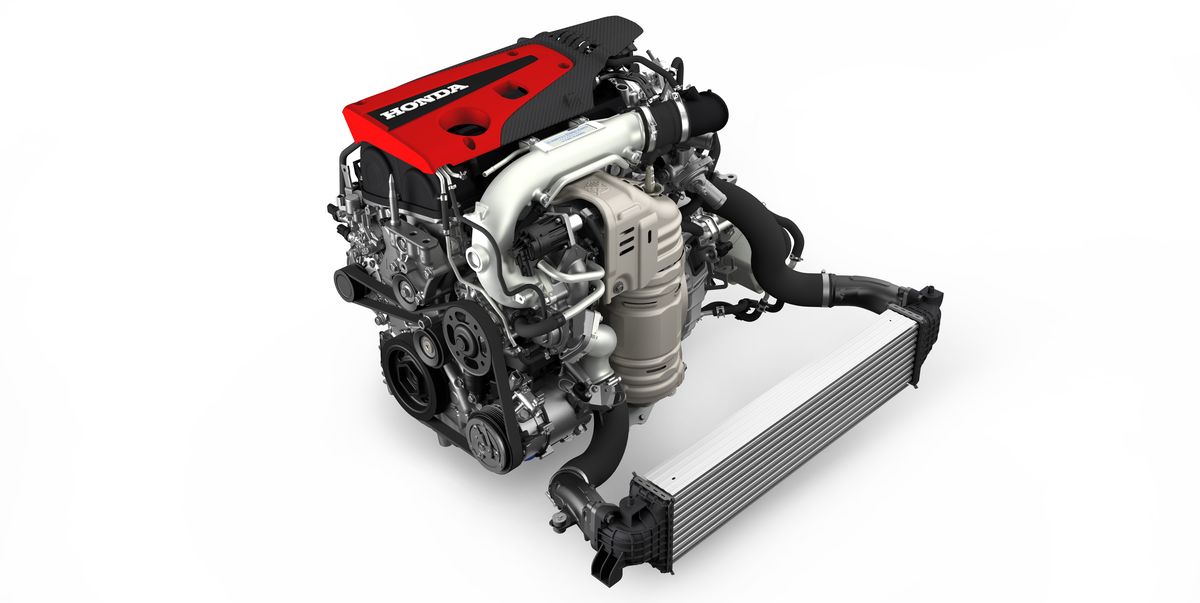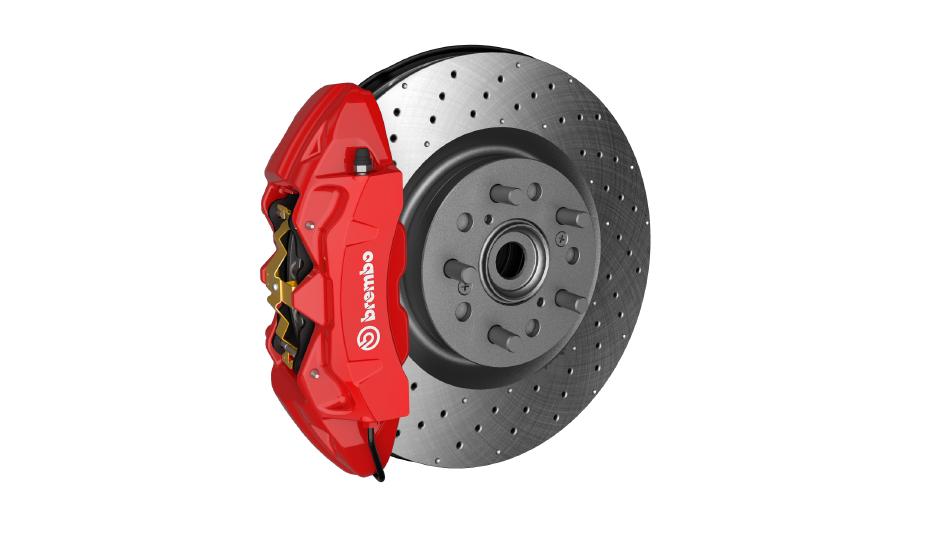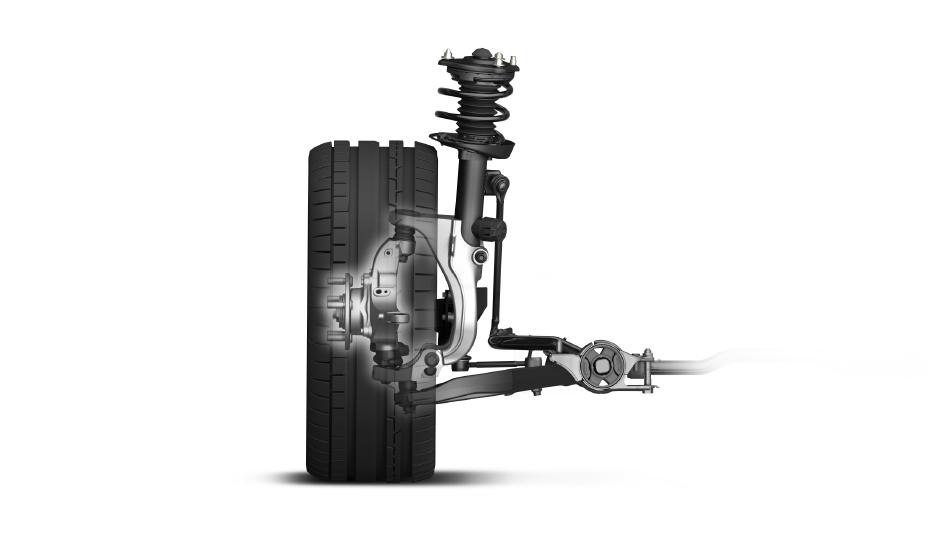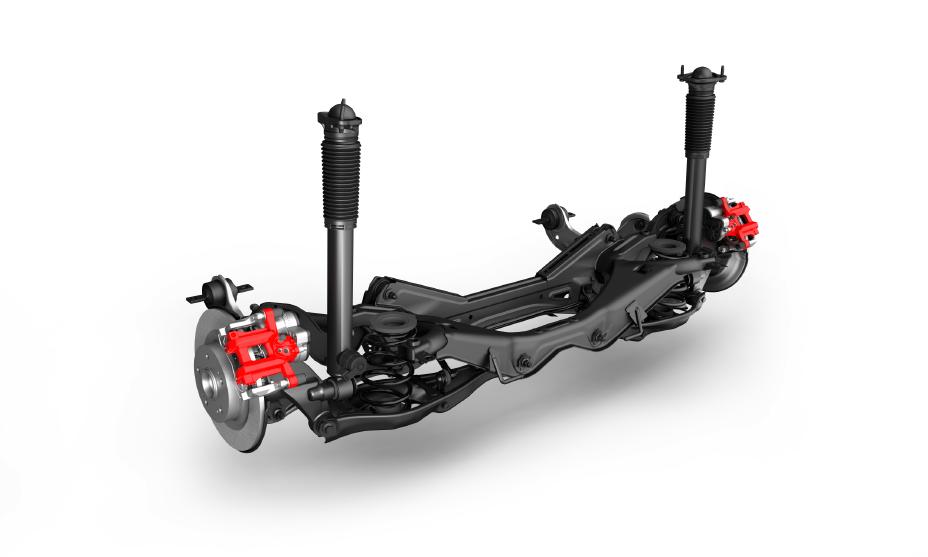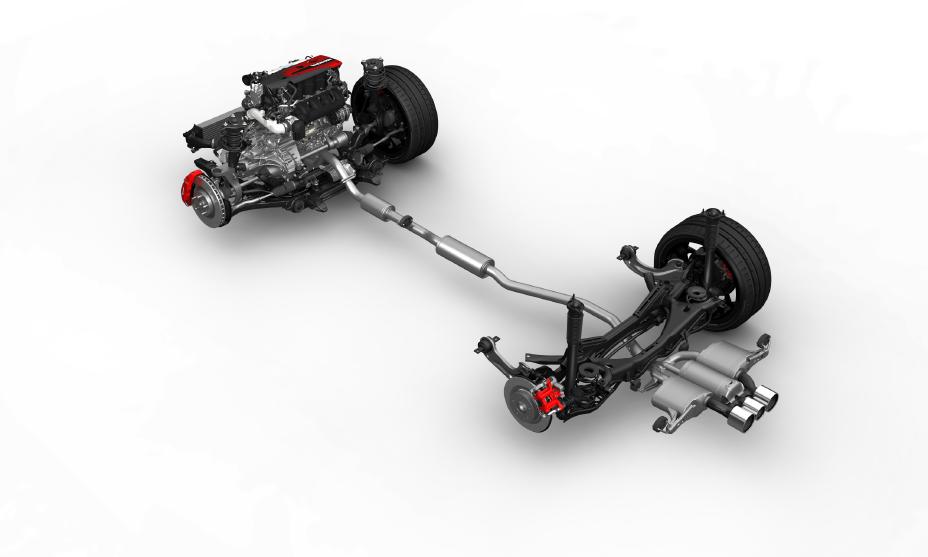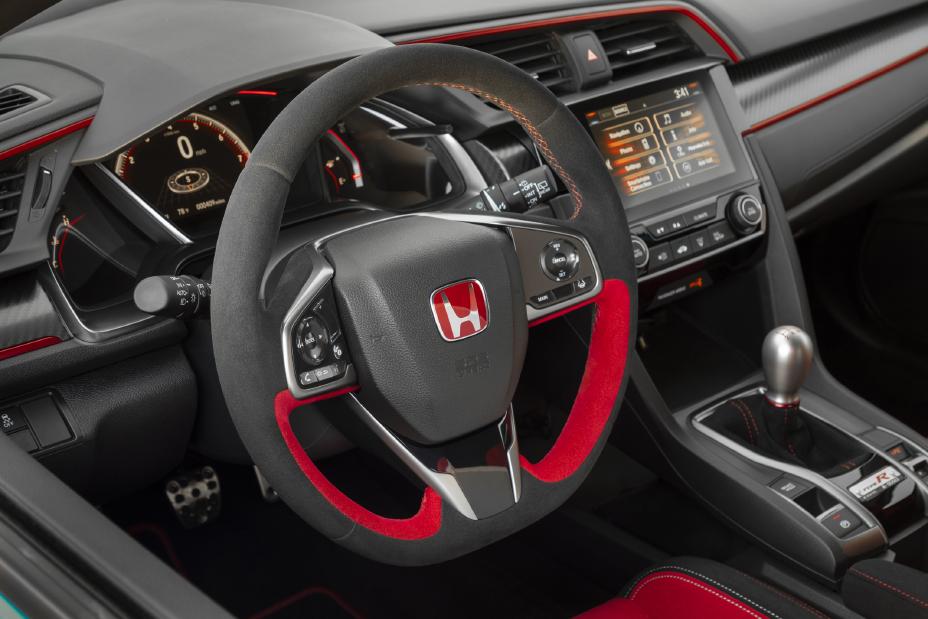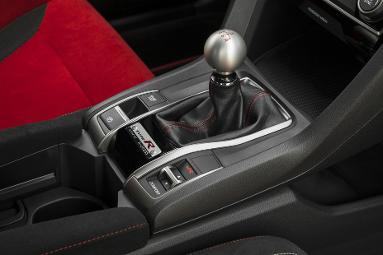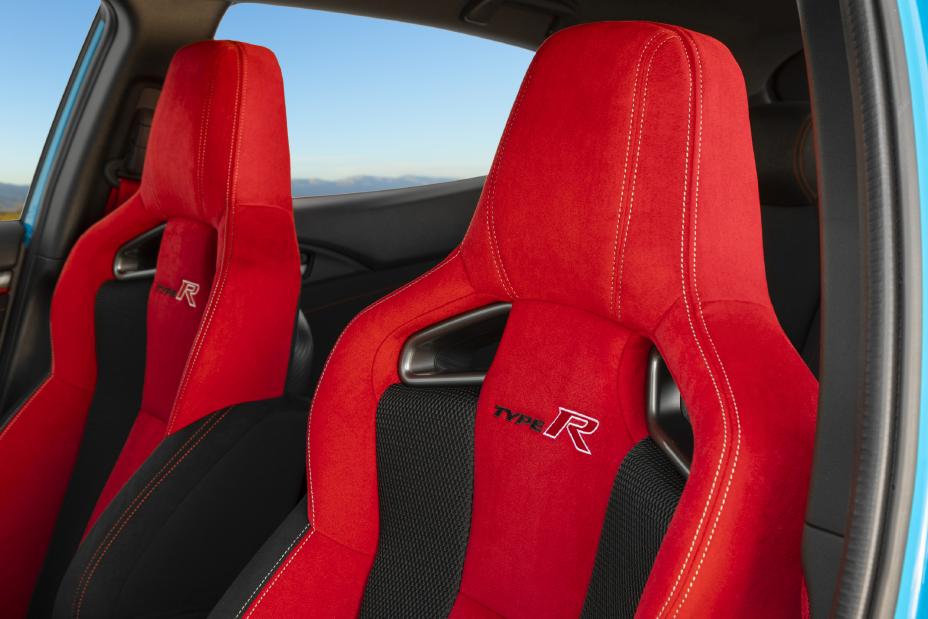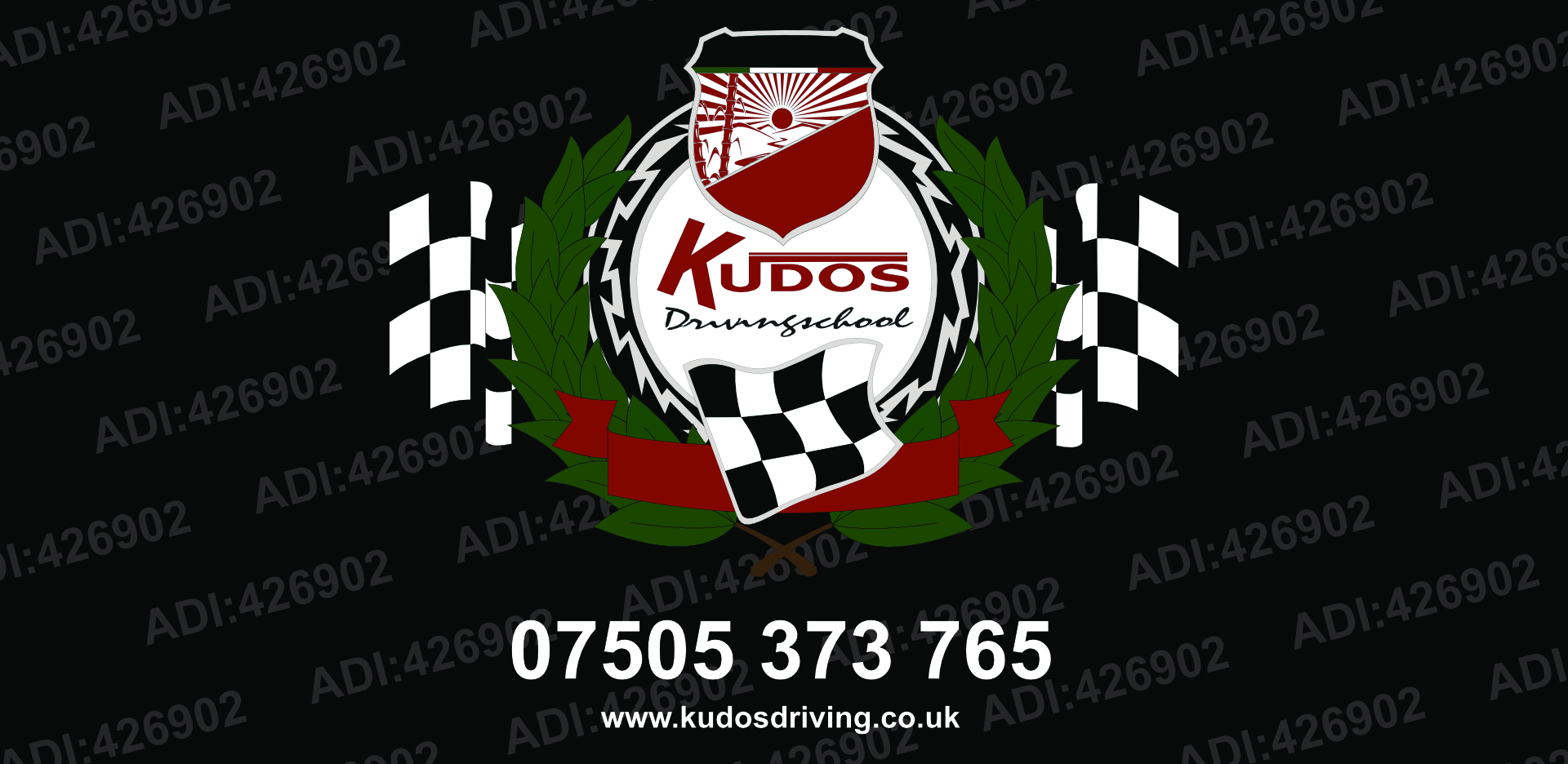OVERVIEW
The 2021 Honda Civic Type R brings a host of important changes to Honda’s iconic performance flagship car, expanding its already considerable performance envelope with enhanced handling, braking, ride quality, styling, and new levels of driver involvement.
Key highlights include:
Retuned bushings in the front and rear suspension for improved cornering stability and sharper steering Revised Adaptive Damper System (ADS) features a substantially higher sampling rate and revised tuning for better control and improved ride comfort New two-piece front brake rotors improve brake cooling and reduce weight Increased engine cooling performance Updated exterior and interior design, plus an exclusive new exterior color Standard Honda Sensing® suite of safety and driver-assistive technologies All-new Honda LogR performance data logging app designed to record driving activity and help improve driver skills As before, the 2021 Honda Civic Type R will be available in one well-equipped trim. With a 324-horsepower 2.0-liter turbocharged DOHC 4-cylinder engine, Civic Type R is the most powerful front-wheel-drive Honda ever made and the most powerful Honda-branded vehicle ever sold in the UK And despite its razor sharp, track-ready handling and performance, the Type R is also praised for its practicality as a spacious, comfortable and civilized daily driver, a rare combination of qualities in a car at any price. On the outside, the 2021 Civic Type R is easily recognized by its bold, purposeful styling. The 2021 Type R is distinguished from earlier models by updated front and rear fascia styling and a new, larger grille opening that improves engine cooling.
The 2021 Type R features an Alcantara™-covered steering wheel, and a new shifter with shorter throws, a new aluminum knob and synthetic suede shift boot. Also new for 2021, the Honda Sensing® suite of safety and driver-assistive technologies.
DYNAMIC IMPROVEMENTS
The 2021 Civic Type R features a number of engineering upgrades aimed at further elevating performance. After listening to feedback from customers, and thousands of kilometers of extensive testing on racetracks and on the road, engineers focused their attention on key areas where improvements would be helpful. Their efforts focused on three main areas: handling and ride response; high-speed braking; and engine cooling. Suspension Updates While Honda’s never-satisfied dynamics engineers wanted to further refine the handling of the 2021 Type R, it had to come without notable loss of daily driving comfort. Directional rigidity of the suspension has been strategically increased via updates to select bushings in the front and rear. In addition, the Adaptive Damping System has been modified for more frequent and precise adjustments improving cornering performance while maintaining Type R’s civilised road manners. The front compliance bushings are 10 percent stiffer longitudinally, resulting in an increase in road feel and improved consistency of the tire contact patch under cornering loads. Additionally, the front lower ball joint has been reengineered for lower friction, improving steering feel and precision. In the rear, the bushings for the lower B-arms were stiffened, increasing lateral rigidity by 8 percent, while also improving toe-in characteristics during cornering. The Adaptive Damper System has been upgraded to sample conditions 10 times faster (2 kHz to 20 kHz), giving the system more discrete control of both ride and handling dynamics. For ride comfort, the system is able to react to conditions more accurately, enabling finer damper control for a smoother ride on surfaces such as broken pavement, whether cruising around town or cornering on less-than-perfect roads. In cornering, the quicker-reacting ADS features new anti-roll control, which works in conjunction with the new stiffer bushings and sharper steering by more effectively harmonizing the timing of body roll and pitch caused by steering, braking and acceleration. This results in better steering response when turning into a corner, improved stability mid-corner, and better control when powering out of a corner. Two-Piece Brake Rotors For improved brake performance with better fade resistance as well as reduced unsprung weight, the Type R’s single-piece cross-drilled front brake rotors are replaced by new floating, two-piece rotors that more quickly dissipate heat. Aided by revised brake pads, the brake pedal benefits from a more immediate feel with approximately 17 percent less play before engagement. In addition, the new front brake system reduces total unsprung weight by about 5 pounds (2.5 lbs. at each front wheel) to aid both ride and handling performance. Improved Engine Cooling The 2021 Type R gets a redesigned grille that features a smaller gloss-black area above, and a smaller red Honda badge in the middle, resulting in a 13-percent larger opening to allow more air to pass through the radiator. In addition, the radiator itself was updated, and now uses a core with a closer pitch between the cooling fins (2.5mm versus 3mm), the increased surface area allowing greater heat dissipation. The result is that in high-demand situations, such as track use, testing revealed coolant temperature reductions of as much as 18 degrees F. In replacing the grille, engineers also modified the shape of the front chin spoiler. Instead of a completely flat bottom, the spoiler now has a very wide “V” shape on the left and right side and now features a “rib” on each end to create negative pressure ahead of the front tires.
EXTERIOR AND INTERIOR DESIGN
In addition to the revised grille treatment, the 2021 Civic Type R receives styling refinements similar to the Civic Hatchback lineup. These updates include revised fog light housings in front, which now feature a solid black background with a body-color blade-type crossbar. In the rear, the lower bumper openings receive changes similar to the front, with new body-color blades over the black backgrounds in the bumper. Additionally, the outside mirrors now incorporate LED turn signals and are heated. Inside, the 2021 Civic Type R gets a new steering wheel wrapped in grippy Alcantara™ and a new shift lever with a restyled knob and synthetic suede shift boot. The new, smaller knob shape is designed to more easily show at a glance which gear the car is in, and is reminiscent of previous Type R models, including the original 1997 Civic Type R. Type R engineers settled on the new shift knob after prototyping 10 different designs for appearance, ease of use, and how the knob fits in the hand. The new shift knob features a 90g counterweight, giving Type R an even smoother and more natural shift feel.
ENHANCED SAFETY FEATURES
Every 2021 Civic Type R will be equipped with the Honda Sensing® suite of safety and driver-assistive technologies, making the Honda Sensing® suite standard equipment on all Civic models and trims. Honda Sensing® on Type R includes Adaptive Cruise Control (ACC), Collision Mitigation Braking System™ (CMBS™) incorporating Forward Collision Warning (FCW), Lane Keeping Assist System (LKAS) and Road Departure Mitigation (RDM) incorporating Lane Departure Warning (LDW). Additionally, all Honda Civic models receive automatic high beams as part of their Honda Sensing® package. The 2021 Honda Civic Type R also features a long list of standard active and passive safety features, including Vehicle Stability Assist™ (VSA®) with traction control, driver and passenger front and side airbags, side-curtain airbags with rollover sensor, Electronic Brake Distribution (EBD), Brake Assist and Honda's next-generation Advanced Compatibility Engineering™ (ACE™) body structure. Civic Type R also features a multi-angle rearview camera with guidelines as standard equipment.
POWERTRAIN
Under the hood, the 2021 Civic Type R continues to draw power from a race-bred 2.0-liter DOHC direct-injected and turbocharged in-line 4-cylinder engine with VTEC™ valvetrain putting out a peak 324 - horsepower and 295 lb.-ft. of torque, with power to the front wheels delivered through a close-ratio 6-speed manual transmission with automatic rev-matching on downshifts, and a limited-slip differential. As before, drivers can choose between three driving modes – Comfort, Sport and +R – that vary suspension firmness, steering assist and throttle response. The Type R’s selectable drive modes and sophisticated design make it both a thrilling companion on a mountain road or a racetrack, and a remarkably civilized daily driver with a degree of flexibility unmatched in its competitive set, especially at the price.
ASEAN NCAP Safety Rating
Euro NCAP has created the five-star safety rating system for vehicles by assigning them one to five stars to help consumers, their families and businesses compare vehicles more easily and to help them identify the safest choice for their needs. The safety rating is determined from a series of vehicle tests, designed and carried out by Euro NCAP. These tests represent, in a simplified way, important real-life accident scenarios that could result in injured or killed car occupants or other road users.
NHTSA Frontal Crash Test Ratings
NHTSA rates crash-tested vehicles by assigning them one to five stars, with five stars indicating the most injury protection and one star indicating the least protection.
Driver's - 5 Stars
Passenger's - 5 Stars
Overall Front -5 Stars
Overall Side - 5 Stars
Overall Rollover Rating -5 Stars
Overall - 5 Stars
Side - Pole - 5 Stars
Side Barrier Rating Driver - 5 Stars
Side Barrier Rating Passenger Rear Seat - 5 Stars
Side - Barrier - 5 Stars Side -
Pole Barrier combined (FRONT) - 5 Stars Side -
Pole Barrier combined (REAR) - 5 Stars
Anti-lock brakes
(ABS) Electronic Brake Distribution (EBD) & Brake Assist ABS brakes automatically sense when a tire has stopped rotating under extreme braking, and will modulate the brake pressure to allow the tire to rotate. This increases the vehicles ability to turn while braking.
Collision Mitigation Braking System
(CMBS)8 is one of the most sophisticated safety systems available. It incorporates the features of the Forward Collision Warning (FCW)9system. A part of the Honda Sensing suite of technologies, CMBS is designed to alert drivers of a potential collision via visual and audible alerts and help the driver take corrective actions. The system can even apply the brakes to help reduce the forces of a collision if the system determines one to be unavoidable.
The system is designed to perform in three stages:
STAGE ONE: If the system determines there is a risk of collision with a vehicle or pedestrian detected ahead, it will issue visual and audible alerts to the driver.
STAGE TWO: If the risk of a collision increases and the driver takes no action, the system will continue the visual and audible alerts, and begin to apply light braking.
STAGE THREE: If the system determines that a collision is unavoidable, it will continue the visual and audible alerts, and apply strong braking to help mitigate the forces of the collision.
Important Note:
CMBS on the Civic Hatchback will not be able to apply enough braking force to prevent all collisions. CMBS also cannot detect all objects ahead; the driver must intervene in certain situations, and must always be attentive when using the system. Also, CMBS may not go through all three stages, and may automatically engage the final stage if the system deems it necessary.
Vehicle Stability Assist™
(VSA®) with traction control Stability control automatically senses when the vehicles handling limits have been exceeded and reduces engine power and/or applies select brakes to help prevent the driver from losing control of the vehicle.
Front-impact airbags
(i-SRS) Front-impact airbags for the driver and passenger have been designed to protect the head during a frontal crash.
SmartVent® front side airbags
The SmartVent® design enhances performance by helping to minimize the possibility of airbag injury, especially to small-statured passengers.
Side impact airbags
Side impact airbags for the front seats have been designed to protect the torso during a side impact collision.
Overhead airbags
Overhead airbags are used to protect the occupant's heads in the event of a side collision or rollover.
Pretensioners
Seatbelt pretensioners automatically tighten seatbelts to place the occupant in the optimal seating position during a collision.
Security system
The vehicle is equipped with a means of anticipating and/or detecting unwanted vehicle intrusion. The vehicle is equipped with an ignition disable device that will prevent the engine from starting if the correct original manufacturer key is not used.
